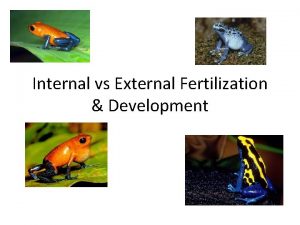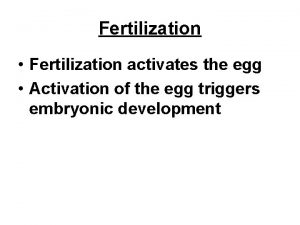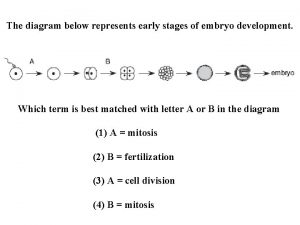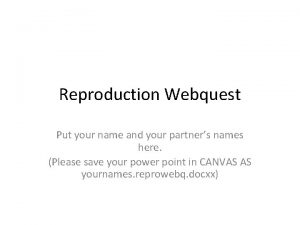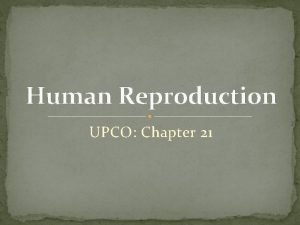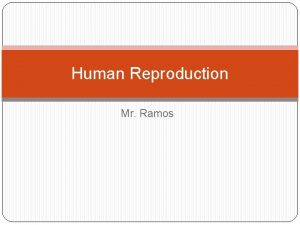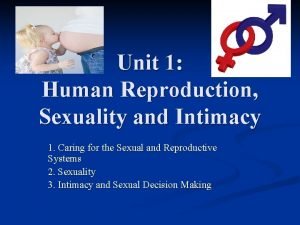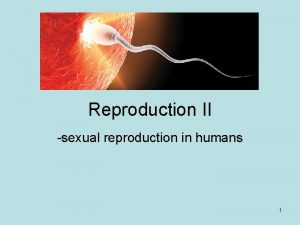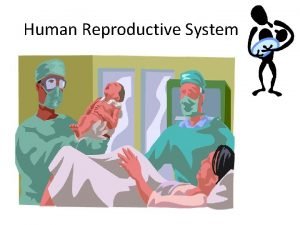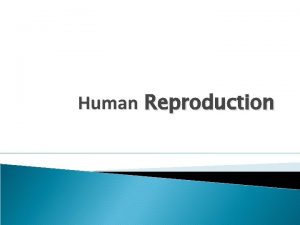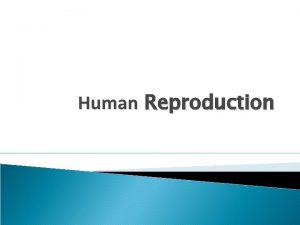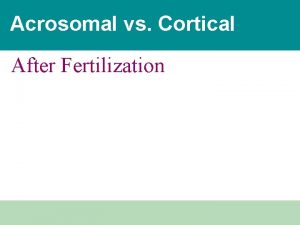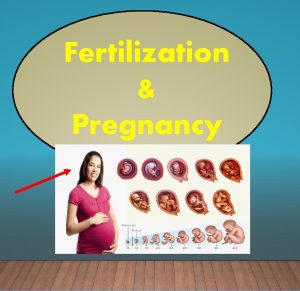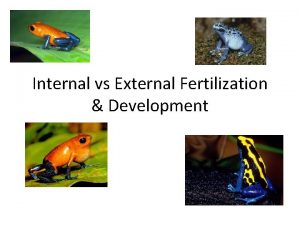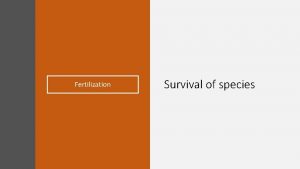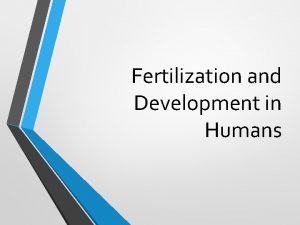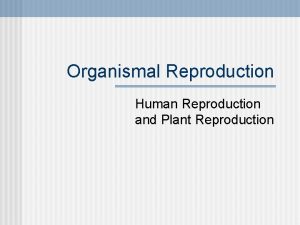Human Reproduction Fertilization Fertilization is the fusion of











- Slides: 11

Human Reproduction

Fertilization � Fertilization is the fusion of sperm and egg. ◦ This happens in the fallopian tubes (oviduct) ◦ Within 24 hours (sometimes 2 -3 days just before, during & after) ovulation. �Note: Sperm can live inside the female reproductive tract for up to 72 hours. Slide 2

� After egg and sperm combine (fertilization occurs) the fertilized eggs becomes a zygote. Fertilization � The zygote then undergoes cleavage (mitosis) for 6 -10 days, then it attaches to the uterus. Slide 3

Development � After implantation, the zygote forms into an embryo. � The placenta forms connecting mother to embryo. � Amnion membrane that surrounds embryo contains fluid for protection Amniotic fluid � Umbilical Cord – blood vessels that carry nutrients to embryo from placenta. Slide 4

Male Reproductive System � Meiosis in males is called spermatogenesis ◦ Sperm cells are produced in the 2 testis in the scrotum sac. 2 n n Slide 5

Hormones � Testosterone is the male sex hormone. ◦ In boys, the testosterone spike deepens the voice, causes the testicles to descend, and contributes to the development of other sex characteristics. ◦ Throughout the life of a man, his body will continue to produce testosterone, although the production rate will decline in old age. � Females also produce testosterone ◦ Helps with osteoporosis Slide 6

Male Anatomy � Testis are located outside of the body because cooler temperatures allow sperm to develop. � Urethra is the tube that carries sperm outside. It also carries urine from the bladder. This tube is located in the penis. Slide 7

Female Reproductive System � Meiosis in females is called oogenesis. � Egg (ova) cells are produced in the ovaries. � Estrogen & Progesterone are the female sex hormones. Only one egg develops Slide 8

Female Anatomy � Eggs travel from ovaries to tube called fallopian tube (oviduct) to become fertilized then goes to uterus. � Cervix is the lower end of the uterus. � Vagina is where the sperm enters during intercourse. Slide 9

Menstrual Cycle � Begins a puberty Monthly release of eggs. � “Normal” (average) cycle is 28 days occurs in four stages. 1. Follicle stage – FSH (hormone)tells uterine lining to thicken. This takes 10 -14 days to complete 2. Ovulation – release of egg into oviduct This happens on day 14. This is when you can become pregnant. 3. Corpus leutem stage – LH (hormone) helps ready uterine lining for egg implantation 4. Menstruation – occurs if no egg is fertilized. The uterine lining breaks down and the tissue and blood are expelled. Slide 10

Menstrual Cycle Slide 11
 Fertilization in external in
Fertilization in external in Binary fission in bacteria
Binary fission in bacteria Hare lynx
Hare lynx Asexual vs sexual reproduction venn diagram
Asexual vs sexual reproduction venn diagram Fertilization in human
Fertilization in human The diagram below represents chromosomes in a zygote
The diagram below represents chromosomes in a zygote Human reproduction webquest
Human reproduction webquest Chapter 21 human reproduction answer key
Chapter 21 human reproduction answer key Introduction of human reproduction
Introduction of human reproduction A sexual reproduction in humans
A sexual reproduction in humans A sexual reproduction in humans
A sexual reproduction in humans Note on hypothalamus
Note on hypothalamus
